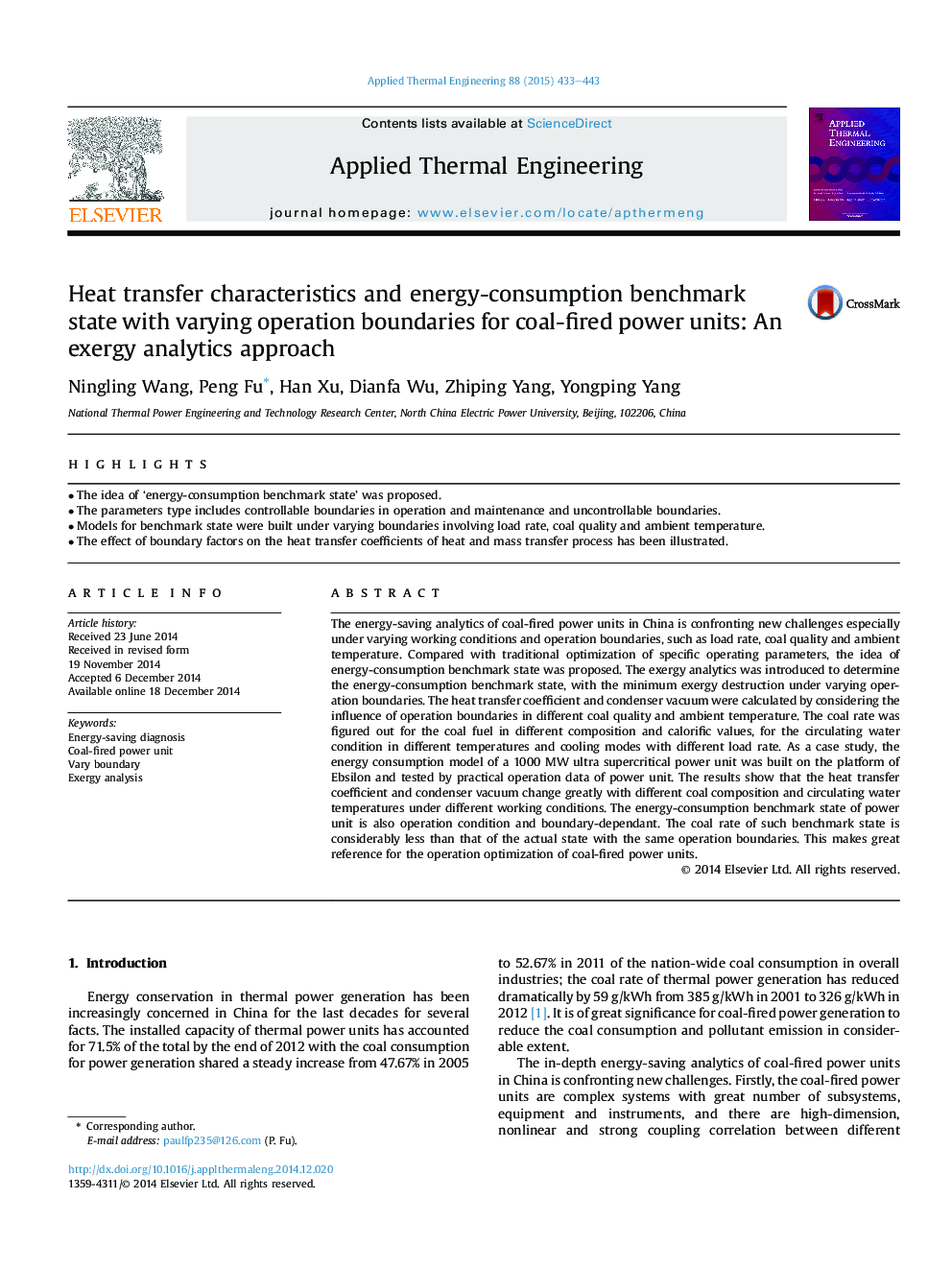| Article ID | Journal | Published Year | Pages | File Type |
|---|---|---|---|---|
| 645331 | Applied Thermal Engineering | 2015 | 11 Pages |
•The idea of ‘energy-consumption benchmark state’ was proposed.•The parameters type includes controllable boundaries in operation and maintenance and uncontrollable boundaries.•Models for benchmark state were built under varying boundaries involving load rate, coal quality and ambient temperature.•The effect of boundary factors on the heat transfer coefficients of heat and mass transfer process has been illustrated.
The energy-saving analytics of coal-fired power units in China is confronting new challenges especially under varying working conditions and operation boundaries, such as load rate, coal quality and ambient temperature. Compared with traditional optimization of specific operating parameters, the idea of energy-consumption benchmark state was proposed. The exergy analytics was introduced to determine the energy-consumption benchmark state, with the minimum exergy destruction under varying operation boundaries. The heat transfer coefficient and condenser vacuum were calculated by considering the influence of operation boundaries in different coal quality and ambient temperature. The coal rate was figured out for the coal fuel in different composition and calorific values, for the circulating water condition in different temperatures and cooling modes with different load rate. As a case study, the energy consumption model of a 1000 MW ultra supercritical power unit was built on the platform of Ebsilon and tested by practical operation data of power unit. The results show that the heat transfer coefficient and condenser vacuum change greatly with different coal composition and circulating water temperatures under different working conditions. The energy-consumption benchmark state of power unit is also operation condition and boundary-dependant. The coal rate of such benchmark state is considerably less than that of the actual state with the same operation boundaries. This makes great reference for the operation optimization of coal-fired power units.
